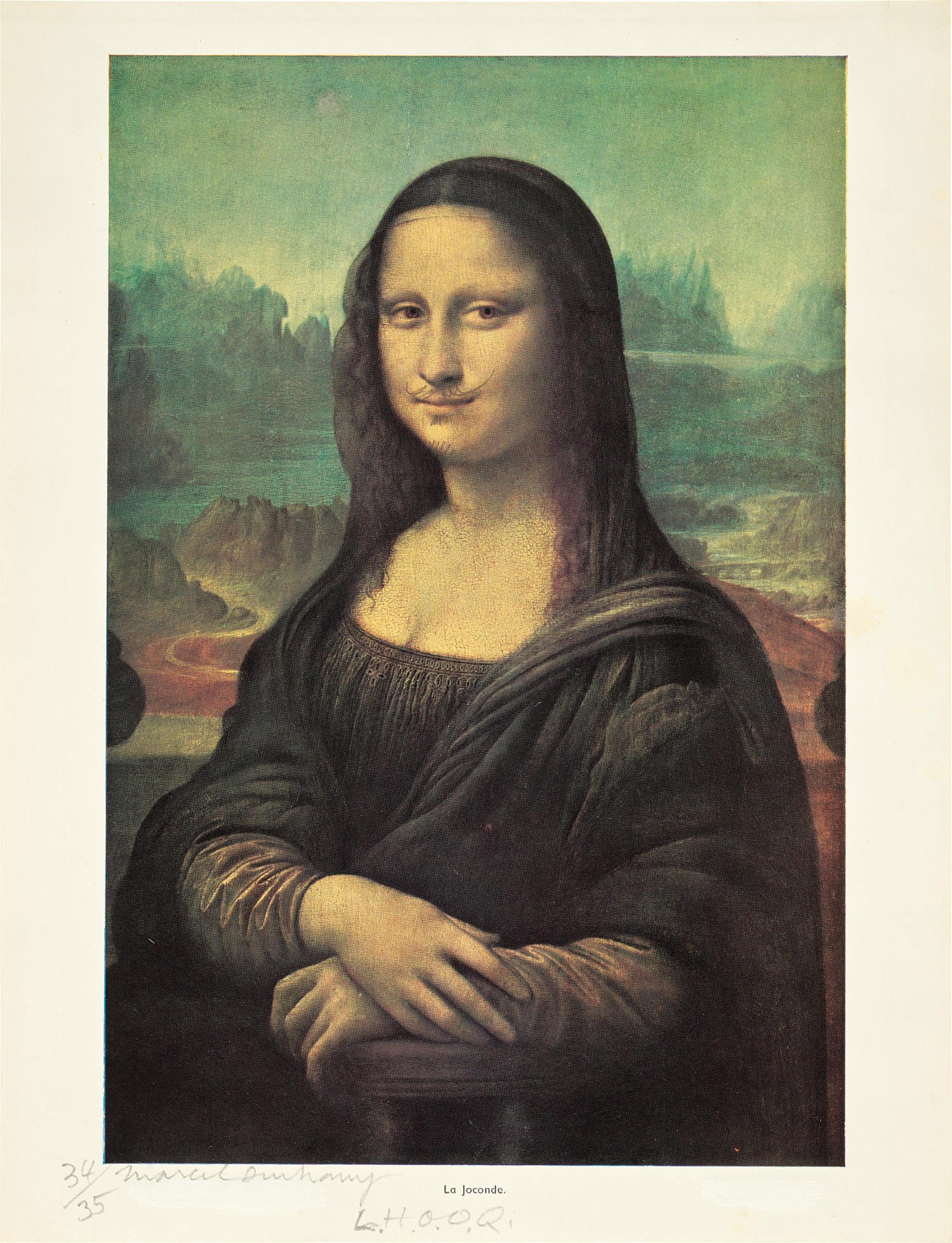

18
Marcel Duchamp
L.H.O.O.Q.
signed, titled and numbered '34/35 Marcel Duchamp L.H.O.O.Q.' lower edge
graphite and gouache on offset lithograph on paper
30.3 x 23.2 cm (11 7/8 x 9 1/8 in.)
Executed in Neuilly-sur-Seine in September 1964, this work is number 34 from an edition of 35 plus 3 unnumbered examples for the artist, Pierre de Massot and Arturo Schwarz. Mme Jacqueline Matisse Monnier and the Association Marcel Duchamp have confirmed the authenticity of this work and it is recorded in the Association Marcel Duchamp archives under no. 64.369fEG6.
Other examples from this edition are in the permanent collections of the Norton Simon Museum, Pasadena; the Staatliches Museum Schwerin; and The Israel Museum, Jerusalem.
Other examples from this edition are in the permanent collections of the Norton Simon Museum, Pasadena; the Staatliches Museum Schwerin; and The Israel Museum, Jerusalem.